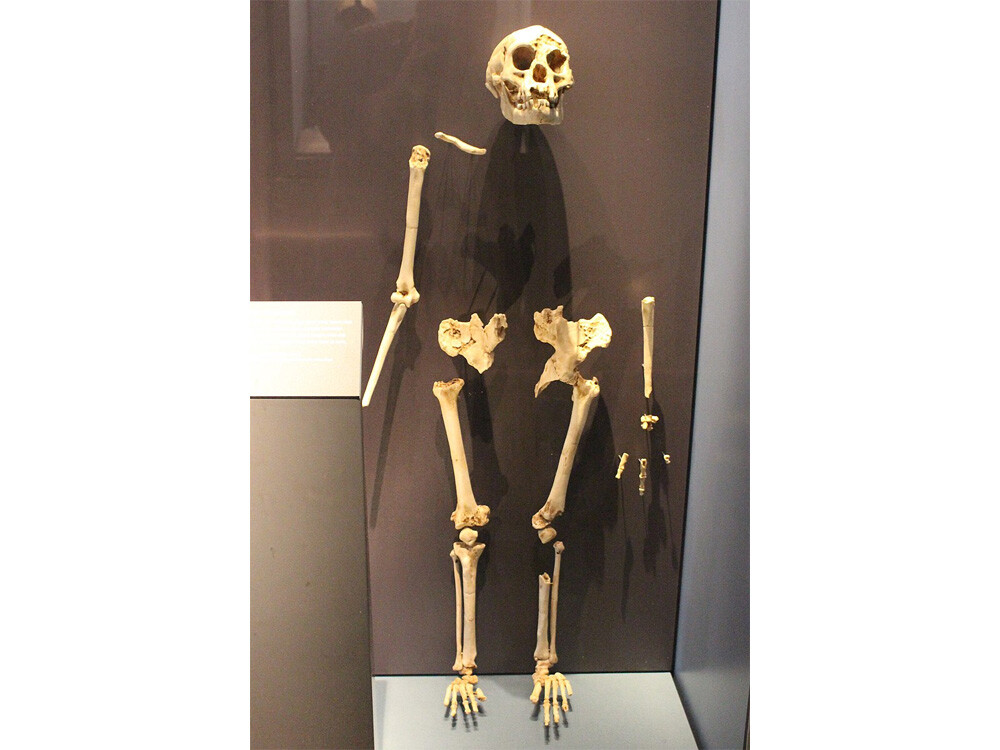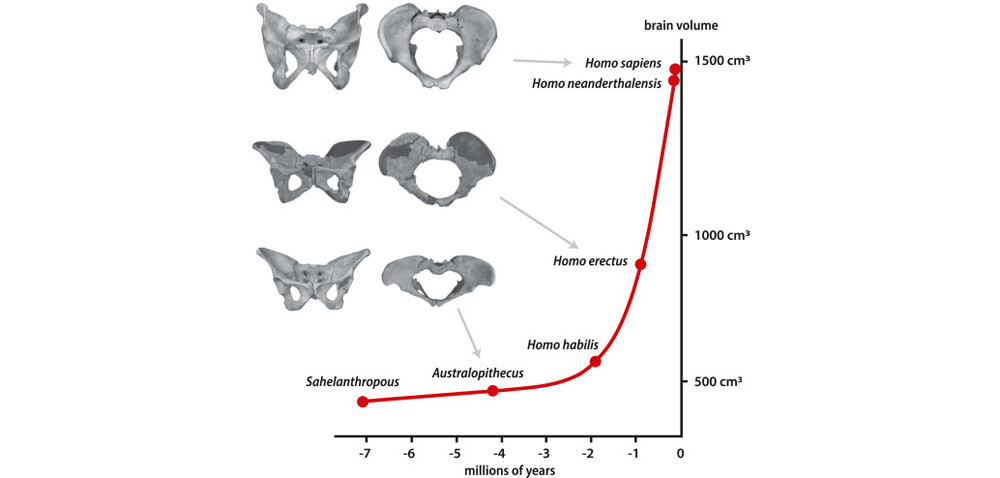We started out as weird single-celled organisms, a few billion years ago. In time, we evolved into the complicated marvels we are today. But if you think it’s a one-way path, with humans growing more and more, that’s foolish talk, pure Homo habilis thinking. In some ways, humans have turned around and gotten smaller.
We’re Shorter Now Than We Were 20,000 Years Ago
People are a whole lot taller than they were a century or two ago, which might look like the clearest example we have of visible evolution. In reality, that’s not evolution at all. Evolution works much slower than that, and the rise we see in people’s heights compared with how they were in Civil War days comes down entirely to improved nutrition.
So, what happens when we extend our view several millennia back, giving us a much longer time for evolution to work its wonders? For that, let’s go examine skeletons of Paleolithic humans. To reduce the number of variables at play, we stick to a comparatively limited location, just Europe. Looking at very old skeletons, from before a massive climatic event that shifted the glaciers 20,000 years ago, we see male specimens averaging out at 179 centimeters in height. That’s more than 5 feet 10 inches. It’s much taller than people were a century ago and is more than the average male height in many European nations today.
Could this be just because we found a bunch of unrepresentatively tall skeletons? Were all our shorter ancestors thrown into volcanos? Possibly, but anthropologists see no reason to believe that’s the case. Nor is there any good reason to think evolution should have selected for shorter people after this, explaining why the average height dropped eight inches by the Late Neolithic period.
The answer may come down again to nutrition. You’ve heard of the Paleo diet, right? In the Paleolithic age, people used to eat meat and veggies. Afterward, we invented agriculture and switched to carbs, and that changed everything. However, the issue might be less the type of food people ate and more how much food they could access. For a few millennia, after the period these skeletons represent, people couldn’t find enough food. That was the whole reason we invented agriculture, and while agriculture helped, it still didn’t provide enough initially. Today, with access to any food you want, you don’t in fact need to eat like a caveman to fulfill your potential.
Spend a Few Generations on an Island, and Watch Everyone Get Smaller
You now know how humans might shrink down across generations, without any genetic change. It’s also possible for hominids to truly evolve and shrink down, forming a whole new species. Behold, Homo floresiensis, the first specimen of which was nicknamed “the hobbit”:

Homo floresiensis lived at the same time as humans, but they were less than 4 feet tall. It’s possible that they descended from Homo erectus, a taller species. We found the floresiensis specimens on the Indonesian island of Flores, which would make the appearance of this halfling an example of what’s known as island dwarfism.
Through island dwarfism, animals who are isolated — on an island maybe, but also places like caves or valleys — get smaller. Mammoths who found themselves on Crete evolved into dwarf mammoths no taller than your waist. Dinosaurs in cutoff valleys also tended to shrink down. This may be because under these conditions, animals benefit more from being smaller and gaining shorter gestation cycles than they do from greater strength. It also may be because the island exerts a will of its own.
Caesarians Have Selected for Smaller-Hipped Women
Giving birth is hard, and scientists aren’t exactly sure how we got stuck in this position. The big problem is the baby’s head is so huge compared to the pelvic canal (“pelvic canal” isn’t a euphemism for vagina but refers to the opening between the back part of the pelvis and the pubic bones). Huge heads mean huge brains, and we needed those to get smart; that much we know. The question is, why didn’t our pelvises and pelvic canals evolve to comfortably accommodate those huge baby heads? Considering how many women and babies died in childbirth, the evolutionary pressure should have been overpowering.
The easy answer is: We just didn’t. Evolution isn’t magic. This is usually the correct explanation behind any supposed shortcoming in how species evolved. We also may not have had enough time for hips to evolve properly, based on how rapidly we evolved large brains.

Scientists, never ones to settle for easy answers, have suggested other possible causes. Maybe larger pelvic canals offered evolutionary disadvantages that outweighed the benefits of easier births. For example, maybe wide-canaled ancestors uncontrollably shit themselves or had their bowels pop out of their vaginas, which would not be terribly conducive to surviving to pass on genes.
In more recent years, there does seem to be some evolutionary pressure on the hips, but it’s to make hips smaller rather than wider. More patients need Caesareans than used to (even apart from the far more patients who have Caesarians simply by choice), and some scientists claim this is proof of evolution in action. Caesareans set off a chain reaction, according to this logic. Once Caesareans became common, women who’s otherwise have died in childbirth survived, and their narrow-hip genes survived as well and proliferated.
Our Brains Were Much Bigger, Once Upon a Time
A couple paragraphs ago, we casually mentioned that huge brains made for smarter humans, as though that’s the most obvious thing in the world. And it’s true that a human-size brain is capable of more thought than the bean-size brain of even the smartest pigeon. Brain evolution isn’t a straightforward matter of growth over many generations, however.
Humans had bigger brains 20,000 years ago than they do now. Bigger by a wide margin — the average brain shrank by the size of a tennis ball between then and now.

Bigger brains aren’t always smarter brains. For example, when we said brains shrank by the size of a tennis ball just now, we actually just meant male brains, because female brains are smaller and shrank by a smaller (but proportional) amount — and yet smaller female brains, as far as science has been able to determine, are just as smart as male brains. We are smarter now than ancient humans were back then. So, maybe brains became smaller only because they became more efficient.
However, we don’t know if that’s the case. We know only the size of ancient brains, not their structure or complexity, and this gap in our knowledge leaves another possibility. Maybe brains did get less powerful because maybe society sucked our brains away. Some cognitive scientists have concluded that brains may have rapidly shrunk and lost function once we formed societal bonds.

After we came to rely on one another, individual cognition mattered less, so maybe less evolutionary pressure favored intelligence. People with smaller brains, which consumed less energy, were always more likely to survive starvation than people with larger brains. But for the first time, people with larger brains were not more likely to survive than anyone else, because their intelligence benefited everyone rather than just themselves.
We are smarter than people 20,000 years ago, because we pass more knowledge and skills among ourselves, but it’s possible that those big-brained humans pre-society had greater raw brain capacity than we do. They just didn’t know how to use it, and that was why they needed so much of it to accomplish even so little. If we had those more powerful brains now, who knows what we could do?
Follow Ryan Menezes on Twitter for more stuff no one should see.

